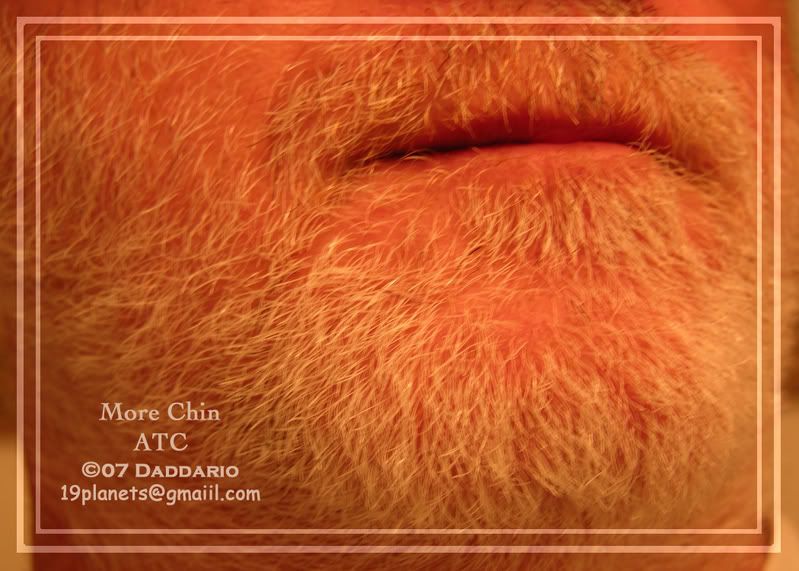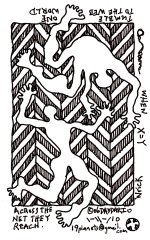 The first step in my Prayer Flag was cutting/tearing the material. The ragged edges are intentional. Prayer Flags are intended to be exposed to the elements of the earth so it is expected that they will fray and shred over time. For this reason Prayer Flag edges are not usually hemmed. It's this weathering process that sends the message of a Prayer Flag out into the world.
The first step in my Prayer Flag was cutting/tearing the material. The ragged edges are intentional. Prayer Flags are intended to be exposed to the elements of the earth so it is expected that they will fray and shred over time. For this reason Prayer Flag edges are not usually hemmed. It's this weathering process that sends the message of a Prayer Flag out into the world.The material is about 6 x 9 inches at this point. This is my first "from scratch" Prayer Flag. I decided to experiment with a first time process for me too. I used a water soluble, cloth tacking glue as a resist, drawing a simple design with my intended message directly on the fabric, then letting it dry.
 When the tacking glue was dry I mixed acrylic paints with a flexible fabric medium. This medium extends the flexibility of the acrylic paint so that the cloth can move freely without the paint cracking. I painted several color layers over the flag trying to keep the glue from getting too wet because I wanted the glue to remain in place at this point.
When the tacking glue was dry I mixed acrylic paints with a flexible fabric medium. This medium extends the flexibility of the acrylic paint so that the cloth can move freely without the paint cracking. I painted several color layers over the flag trying to keep the glue from getting too wet because I wanted the glue to remain in place at this point. When the paint was dry I rinsed out the glue. When the Prayer Flag was again dry I hand stitched a cord channel at the top of the flag by folding down about half an inch of material. Now the flag can be strung up on a cord with other flags and then suspended outside so that the Prayer Flag message can go out into the world.
When the paint was dry I rinsed out the glue. When the Prayer Flag was again dry I hand stitched a cord channel at the top of the flag by folding down about half an inch of material. Now the flag can be strung up on a cord with other flags and then suspended outside so that the Prayer Flag message can go out into the world.One thing I hadnt anticipated was how light flows through the lines of the design while being blocked by the acrylic paint. When this happens it's as if the lines are glowing. I like the unexpected effect.
I did 9 Prayer Flags in all. Five flags will soon be swapped out in a Mail Art swap and I'll get Five different Prayer Flags, by different people, back in return.









No comments:
Post a Comment